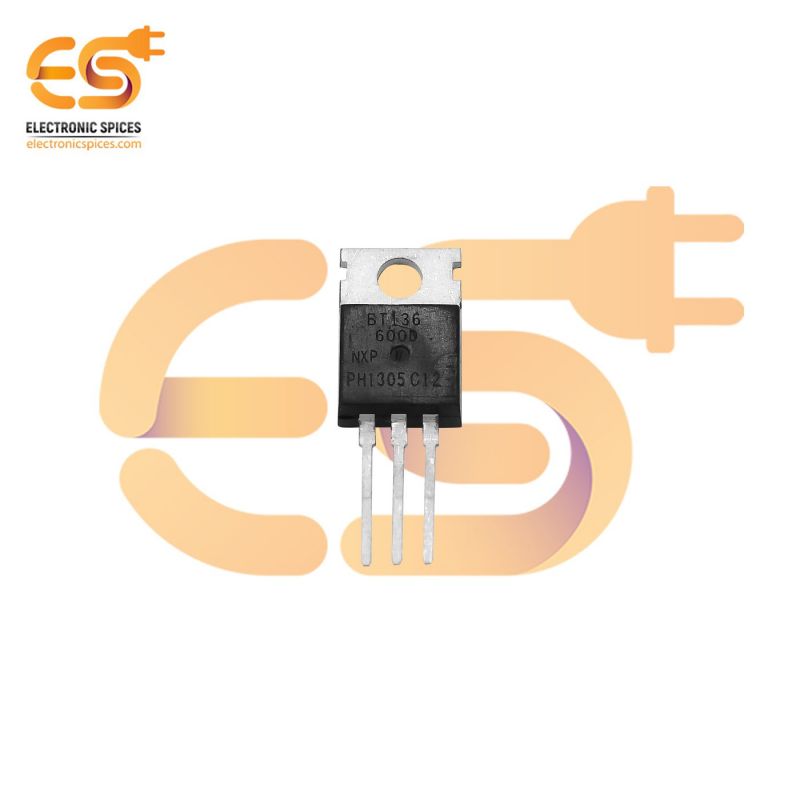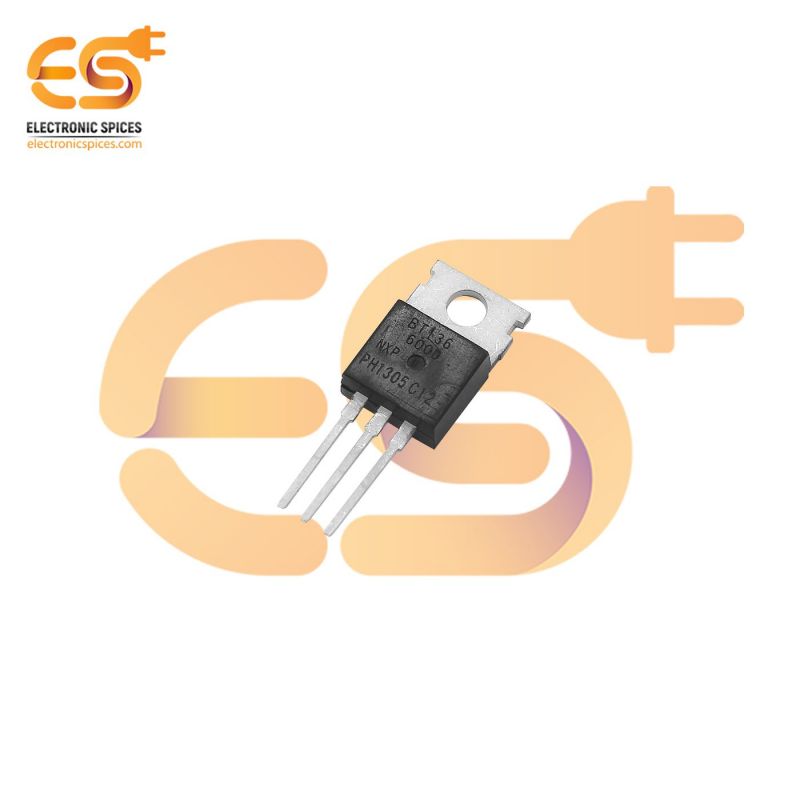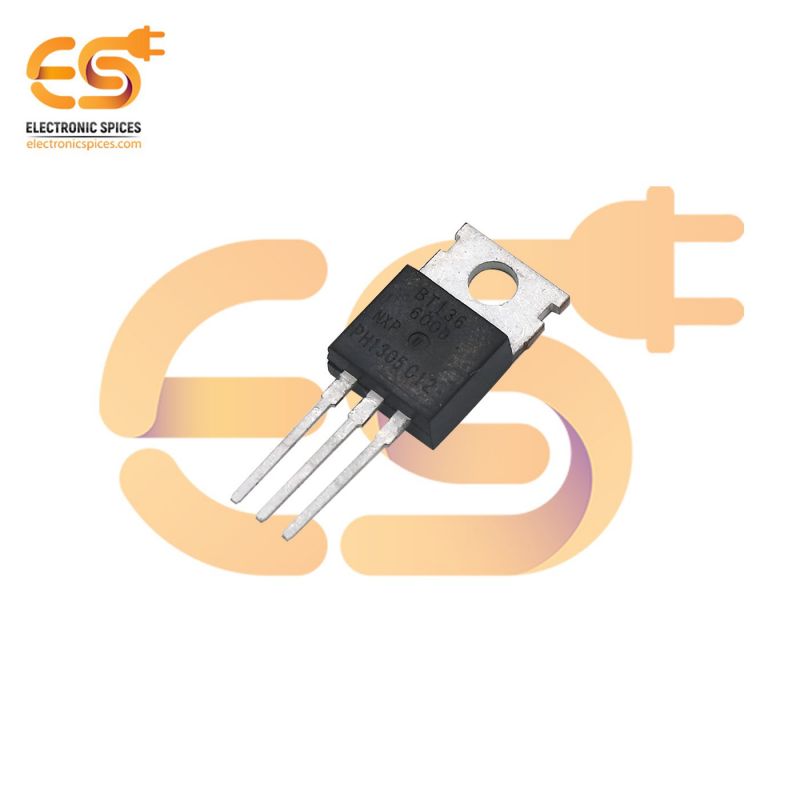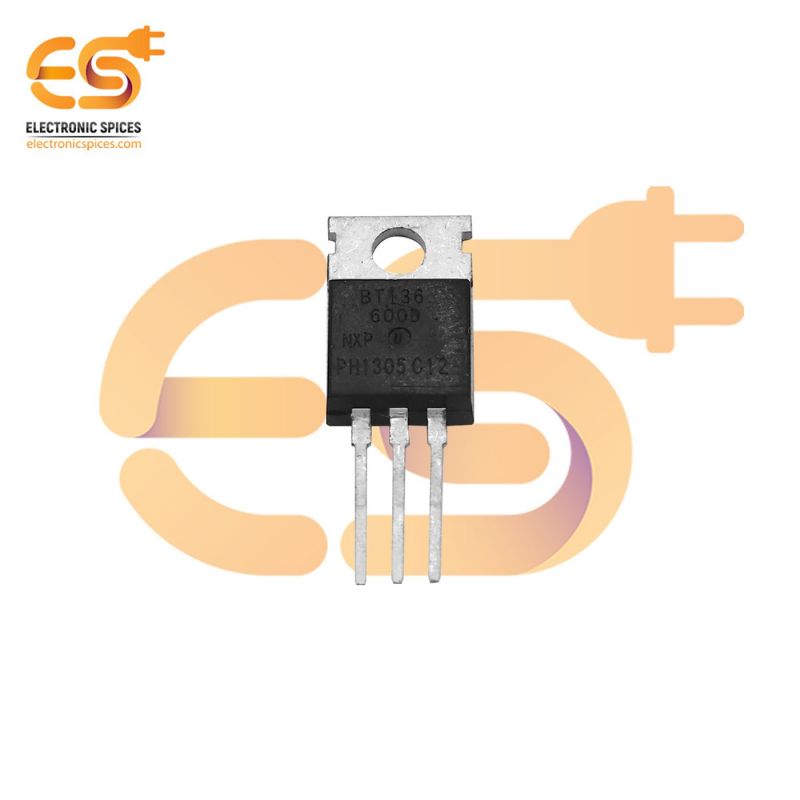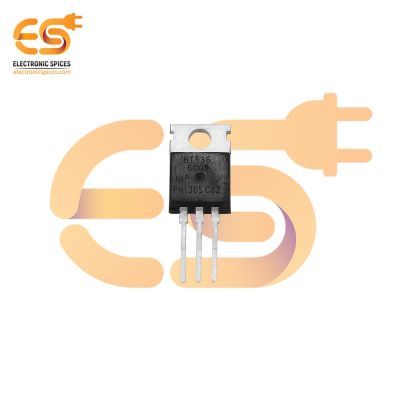Have any Query? Chat with us
TRAIC
BT136-600D Transistors Max 600V 4A pack of 10pcs
Specifications
- Maximum terminal current : 4A
- On-state gate voltage : 1.4V
- Gate trigger current : 10mA
- Max terminal voltage : 600 V
- Holding current : 2.2mA
- Latching current : 4mA
- Package includes : 10 pieces
Available in Pack Of:
SKU: 471KB
MRP Rs. 125.35
Rs.
109.00
(Incl. Tax)
Rs.
92.37
(+18% GST extra)
Rs. 92.37 / pack of 10 = Rs. 9.24 per piece
Buy to Get ₹0 off!
₹0 Special Discount Applied
BT136-600D Transistors Max 600V 4A pack of 10pcs
A TRIAC transistor with a maximum terminal current of 4A is the BT136-600D. The BT136 can be driven by digital circuits due to its relatively low gate threshold voltage. It is usual practice to employ TRIACs for switching AC applications due to their bidirectional switching capabilities. Therefore, BT136 could be the perfect choice if you want to use a digital device, such as a microcontroller or microprocessor, to regulate an AC load (dim, speed) that uses less than 6A.
Package includes
This is the pack of 10 pieces of BT136-600D Transistor TRIAC 600V 4A
Applications
- AC Light dimmers
- Strode lights
- AC motor speed control
- Noise coupling circuits
- Controlling AC loads using MCU/MPU
- Ac/DC Power control
Tips
- Since TRIACS deal with AC voltages, the circuit involving them has to be designed properly to avoid problems some tips are shared below
- An phenomena known as Rate phenomena affects all TRIAC circuits. When the TRIAC is constantly switching on and off, it might cause damage if an abruptly high voltage is applied to any of its main terminals. A snubber circuit is an effective way to circumvent this.
- In a similar vein, the backlash effect exists. This happens because capacitance builds up between the TRIAC's MT1 and MT2 terminals. The TRIAC will remain off regardless of the gate voltage because of this. A sequence of resistors, which allows the capacitance to discharge, solves this problem.
- An always-recommended zero-crossing method is to be employed for adjusting the output AC voltage for dimmer or speed control applications.
- Due to its sensitivity to electromagnetic interference (EMI) and harmonics, TRIACs used in switching circuits should be physically separated from one another.
- An alternate discharge path must be provided for the load to drain the inrush current since there is a potential of backward current when the TRIAC switches inductive loads.
Social Links:
Recently Viewed Products
Related products
